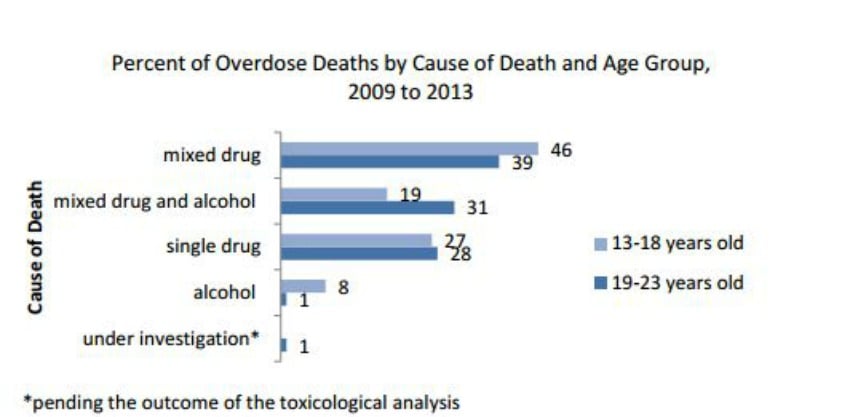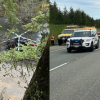In the matter five years nearly 200 people under the age of 23 died of an overdose in British Columbia.
A recently released review completed by a child death review panel, established by the Chief corner, broke down the number of overdose deaths in British Columbia and studied who died and how they died.
Between 2009 and 2013 26 youth (13-18-years-old) and 156 young adults (18-23-years-old) died from an overdose.
The panel found out that most of the people who died of an overdose had a mix of substances in their system. Most of the youth died while in the company of someone else, while most of the young adults died alone.

Approximately 77 per cent of youth and 37 per cent of young adults were reported to be with other people when they passed away. Between 2004 and 2013 the number of overdose deaths appeared to be relatively even, except for 2011 and 2013, where there was a spike in the number of deaths.

Information from a 2013 BC Adolescent Health Survey found that 45 per cent of youth between grade 7 and 12 had drank booze and 26 per cent had smoked weed. When it came to other drugs 11 per cent of youth said they got high off prescription pills without physician consent, 6 per said they’ve done hallucinogens, and 5 per cent had tried mushrooms.
When it came to young adults, primarily young men between 19 and 23-years-old died from overdoses, yet the same number of men and females died who would be considered a youth.

Approximately 62 per cent of youth who died had parents who were aware of their drug use. In some instances though the family members had thought their child was not using drugs at that time.
Out of the 200 people who died of overdoses between 2009 and 2013, 23 per cent of the youth and 14 per cent of young adults were aboriginal. These findings are consistent with recent research findings. Between 2001 and 2005 a population-based analysis of overdoses in First Nations in BC found that death rates involving First Nation individuals were between two and five times higher than provincial mortality rates.

The panel was unable to present comparisons between regions where deaths happened, but instead were able to identify if more deaths happened in a rural or urban setting.
The young people died across 55 different locations throughout the province. Most of the deaths at 91 per cent took place in an urban centre, in places like Greater Vancouver, Victoria, or Prince George.
Getting medical attention as fast as possible was one of the recommendations that came out of this new report.
The BC Emergency Health Services, policing agencies, and key stakeholders are asked to make strategies to help promote calling 911 if an overdose happens. The First Nation Health Authority will now be working on getting access to Take Home Naloxone to mitigate opiate overdoses in First Nation communities.
The Ministry of Education must update its physical education curriculum to include overdoses as a form of medical distress and it must teach people it’s okay and important to call 911.
Education also needs to increase in British Columbia. The panel agreed saying that people need to be able to recognize the signs of an overdose, and seek medical intervention immediately.

The final recommendation is the B.C. Coroners Service needs to share overdose death reports with the B.C. Emergency Health Services and that First Nations Health Authority must do more research into opioid overdose data and trends in communities.
















